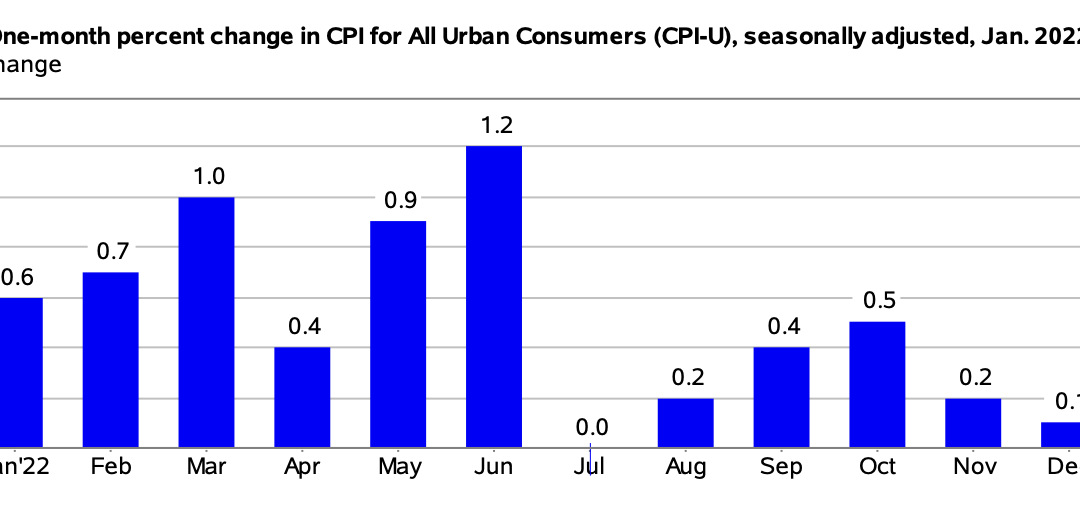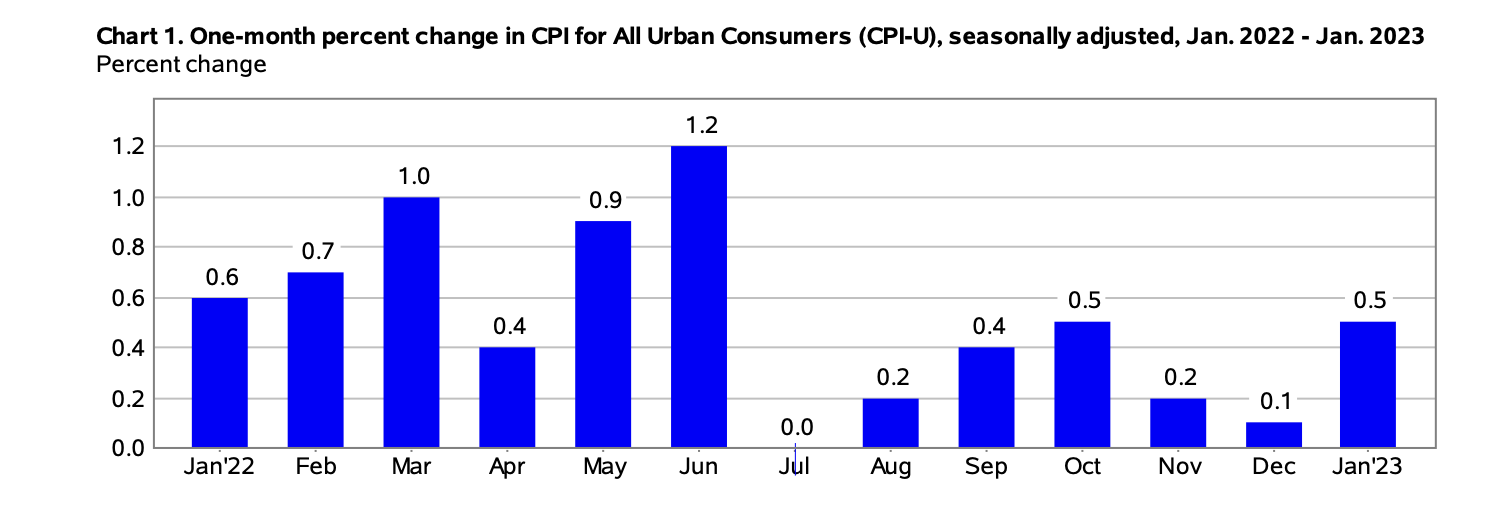The Consumer Price Index for All Urban Consumers (CPI-U) increased by 0.5% on a seasonally adjusted basis, reported the Bureau of Labor Statistics. Year-over-year, before seasonal adjustment the all items index grew by 6.4%.
The primary contributing variable to the acceleration in the CPI-U was shelter, but other items such as food, gasoline, and home heating costs also applied upward pressure on the CPI-U.
Even though they represented a modest easing in inflation, January’s CPI figures, on the whole, came in slightly worse than analysts expected. For example, Bloomberg forecasted a deceleration to 6.2%—a whole 0.2 points below the actual figure.
Source: U.S. Bureau of Labor Statistics
Food
In January, the index for food rose by 0.5%, following a 0.4% rise in December 2022. Of the six major grocery store indices utilized by the BLS, four of them increased month-over-month. Meats, poultry, fish, and eggs increased by 0.7% in January while the egg cost index increased 8.5%.
By contrast, fresh fruits and vegetables lowered in price in January, falling 0.5%, while dairy prices remained the same as in December 2022.
Gasoline Prices
January’s gasoline prices increased 2.4% month-over-month. Before seasonally adjusting, the price at the pump rose by 3.2%. Therefore, consumers paid considerably more to fill their car’s gas tank in January compared to the month prior.
Energy
The energy index rose 2.0% in January and 8.7% year-over-year, representing a stark increase due in large part to the ongoing Russian invasion of Ukraine. Over the past 12-month period, the fuel oil index rose 27.7% while electricity costs rose 11.9% and natural gas rose 26.7%.
Source: U.S. Bureau of Labor Statistics
All Items Less Food and Energy
January 2023’s CPI report indicated that the core index (i.e., less food and energy) rose 0.4%. Main contributors to the rise in the core index were shelter costs, motor vehicle insurance, recreational costs, clothing and apparel, and household furniture and goods. Those that decreased, by contrasted, were used cars and trucks, healthcare costs, and airfare.
The shelter index was the single strongest factor in January’s rise in the core CPI. The shelter index alone rose 7.9% compared to last year, which was responsible for roughly 60% of the total upward pressure on January 2023’s CPI less food and energy.
In sum, while continuing a multi-month downtrend in overall inflation, January 2023’s CPI report was higher than many market watchers expected.
Want to learn more about how inflation is impacting the economy? Take a look at our calculator widget to keep tabs on how the CPI is impacting your financial life, and don’t forget to subscribe to our monthly newsletter if you haven’t already.
Source Cited: https://www.bls.gov/news.release/cpi.nr0.htm





